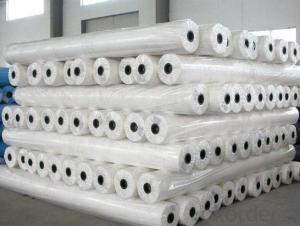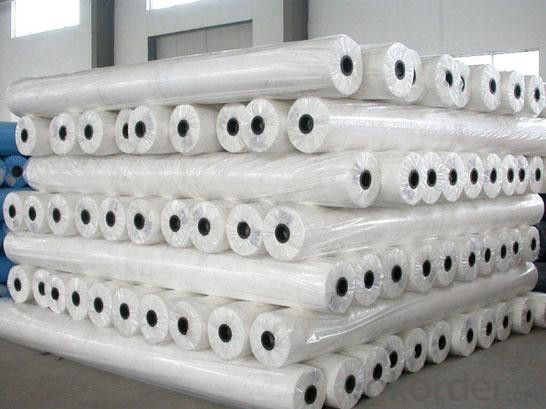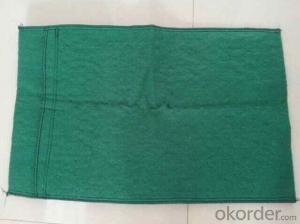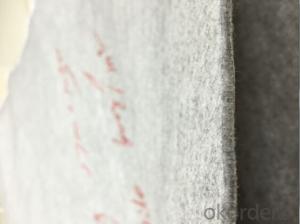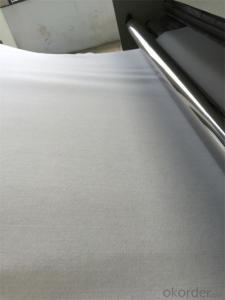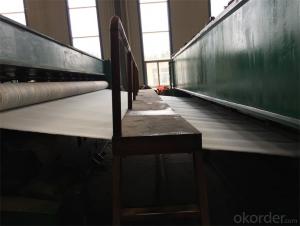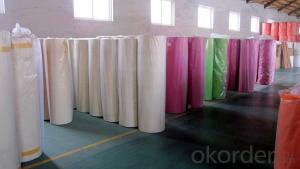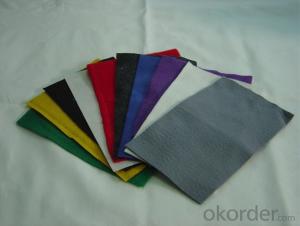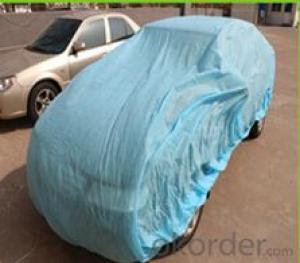Geotextile Fabric PP Spunbonded Nonwoven Fabric Cloth for Plant Cover
- Loading Port:
- China Main Port
- Payment Terms:
- TT OR LC
- Min Order Qty:
- -
- Supply Capability:
- -
OKorder Service Pledge
OKorder Financial Service
You Might Also Like
Introduction of Beige PP Spunbonded Nonwoven Fabricis used to protect the crops in agriculture UV resistance masterbatch could be added 1%~8%. It can protect the vegetable crops and new lawns against extreme weather, animal and insect damage, yet allows light, water and air to penetrate, creating protected growing conditions..
Specification of Beige PP Spunbonded Nonwoven Fabric:
Material | 100% Polypropylene/100%PP |
Width | 0.4--3.2M |
Color | Any color available |
Roll Length | According to your requirement |
Technics | Nonwoven |
Nonwoven Technics | Spunbonded |
Pattern | Yarn Dyed |
Weight | 9-200GSM |
Style | Plain |
Feature | Waterproof,Mothproof,Eco-friendly,Non-toxic,Breathable,Anti-Bacteria |
Certification | ISO9001 |
Usage | Agriculture,Indrustry,Construction,Packaging,Home-textitle, etc |
MOQ | 1Ton/1000KG |
Payment Terms | T/T or L/C |
Delivery Time | Within 7-15 days |
Packaging Detail | Plastic film in roll |
Place of Origin | Shandong,China |
Loading of Port | Qingdao |
Sample | Free samples are available |
Packing of Beige PP Spunbonded Nonwoven Fabric
Each roll is wrapped in a plastic bag with label specification with paper tube inside .
Superiority
1.Free Samples
2.Factory Supply
3.Competitive Price With High Quality
4.More than 20 years experience
- Q: Will you master knitting reinforced geotextile H and reinforced geotextile What is the difference? In addition, how to distinguish between spunbond and weaving in reinforced geotextiles? More
- Texture and material ratio is different ah.
- Q: What are the considerations for geotextile selection in mining operations?
- When selecting geotextiles for mining operations, several considerations need to be taken into account. Firstly, the geotextile should be able to withstand the specific conditions of the mining site, such as high pressure, abrasion, and chemical exposure. It should also have sufficient strength and durability to support the load and prevent soil erosion. Additionally, the geotextile's permeability should be assessed to ensure proper drainage and filtration of water or other liquids. Lastly, its installation and maintenance requirements, as well as cost-effectiveness, should be considered to ensure seamless integration into the mining operation.
- Q: Can geotextiles be used in erosion control in coastal bluff stabilization?
- Yes, geotextiles can be used in erosion control in coastal bluff stabilization. Geotextiles are often used as a reinforcement material in slope stabilization projects, including coastal bluffs, to prevent erosion and provide stability. They help to control soil erosion by stabilizing the soil and allowing water to drain while preventing the loss of soil particles. Geotextiles can be an effective solution for erosion control in coastal bluff stabilization.
- Q: How do geotextiles prevent soil erosion on slopes?
- Geotextiles prevent soil erosion on slopes by providing a protective barrier that stabilizes the soil and prevents it from being washed away by water runoff. They help to distribute the weight of rainfall evenly across the slope, reducing the erosive force and promoting water infiltration into the soil. Additionally, geotextiles retain sediment particles, preventing their movement and maintaining the integrity of the slope.
- Q: Are geotextiles suitable for use in geogrid reinforced embankments?
- Yes, geotextiles are suitable for use in geogrid reinforced embankments. Geotextiles provide separation and filtration properties, which help to prevent soil erosion and ensure the stability of the embankment. They also enhance the overall performance of the geogrid by improving load distribution and reducing differential settlement. Therefore, using geotextiles in conjunction with geogrids is a common and effective method for reinforcing embankments.
- Q: How do geotextiles aid in the reduction of soil settlement?
- Geotextiles aid in the reduction of soil settlement by providing a separation layer between two soil layers, preventing intermixing and consolidation. This separation minimizes the migration of fine particles and water, maintaining the stability and integrity of the soil layers, ultimately reducing settlement.
- Q: Can geotextiles be used for drainage?
- Yes, geotextiles can be used for drainage. They are commonly used in various drainage applications such as road construction, retaining walls, and landfills. Geotextiles help in preventing soil erosion, filtering out sediments, and allowing water to pass through while retaining the soil.
- Q: Does geotextile affect water purification?
- Do not know what you use after the purification of water, if not drinking water, I think it will not affect the water quality, the general purpose of water purification, geotextile will not affect, because the geotextile material is polyester or polypropylene, In the chemical nature of relatively stable, no changes in room temperature conditions, so there will not be any impact on water quality
- Q: Geotextile now how much money? what is the price?
- Geotextile, also known as geotextile, it is made of synthetic fiber through acupuncture or woven from the permeability of geosynthetics. Geotextile is a new material geosynthetics which one, the finished product for the cloth, the general width of 4-6 meters, the length of 50-100 meters. Geotextile is divided into a spinning geotextile and non-woven filament geotextile. Geotextile price in addition to weight (80-1500g / ㎡) to count, the quality standard is also a requirement, divided into non-standard, whitening A, Sinochem, the general national standard, Paul GB, Dahua GB and so on. Ton price is generally between 4000-8000 yuan / ton geotextile material manufacturers to answer
- Q: Are geotextiles resistant to fire?
- No, geotextiles are not naturally resistant to fire.
Send your message to us
Geotextile Fabric PP Spunbonded Nonwoven Fabric Cloth for Plant Cover
- Loading Port:
- China Main Port
- Payment Terms:
- TT OR LC
- Min Order Qty:
- -
- Supply Capability:
- -
OKorder Service Pledge
OKorder Financial Service
Similar products
Hot products
Hot Searches
Related keywords
